
Follow me:
Español
English
Until now there´s only two different versions I´ve seen of the hard case. Apparently, the first one was a copy of a Japan made issue, and the one below was done by Gibson, which Neil asked to cancel and stop production. There´s very little information regarding the case, and it´s important to know whether is accurate. With a computer design program I´ve prepared two different formats to see which one we finally choose.
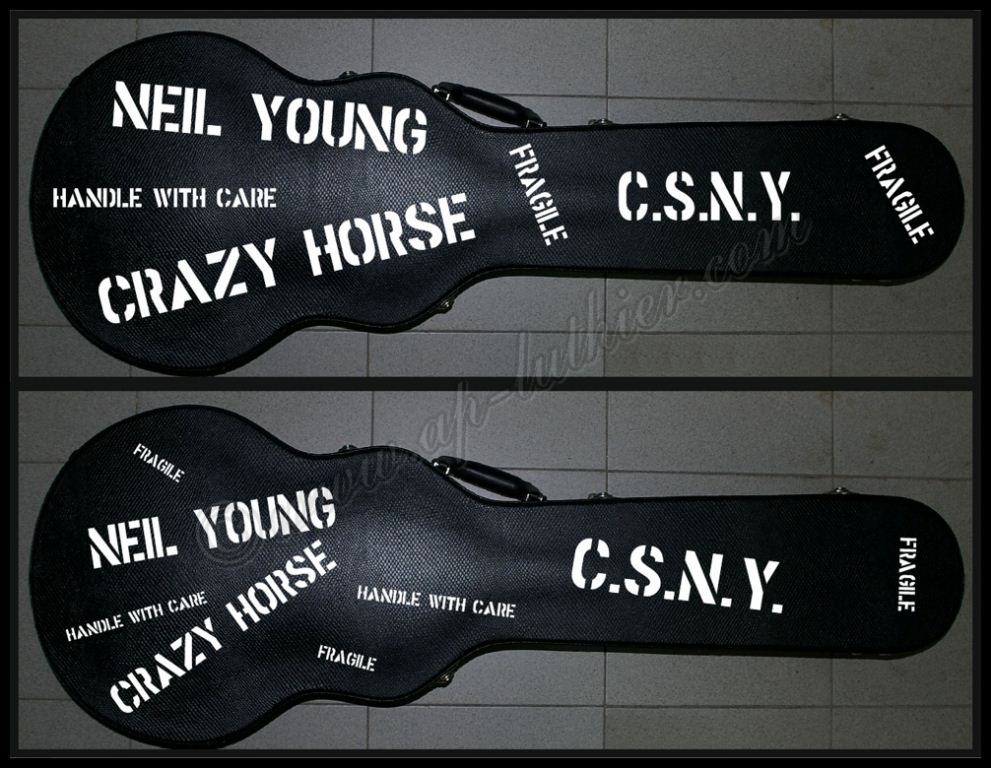
A pic with all parts mounted on the guitar. I´m doing this in order to better identify all the scars, dings & dongs that I´ll have to imitate accurately.
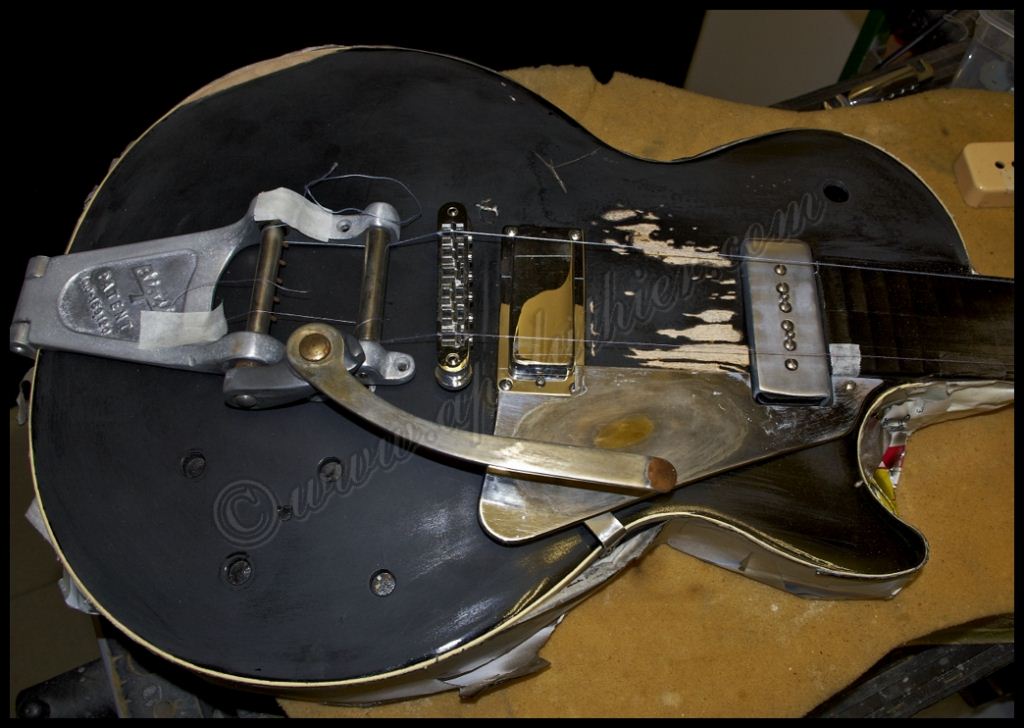
Me in action working on the wear underneath the strings between the pickups
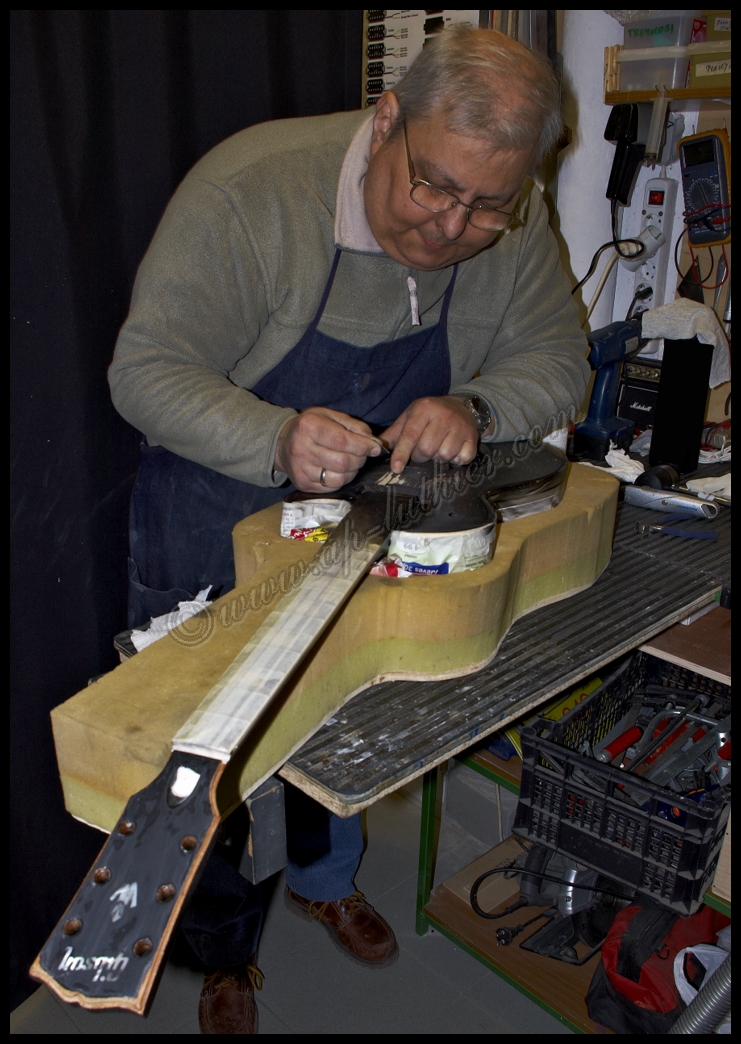
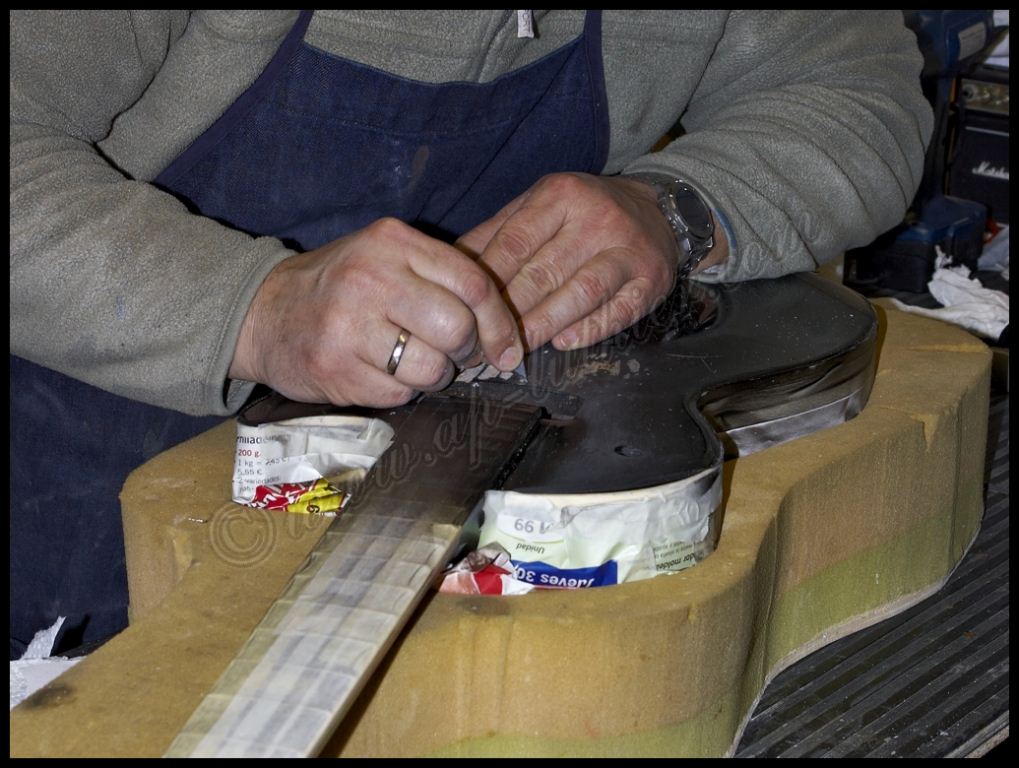
Working on simulating the sweat and dirt that the original has after so many years of use
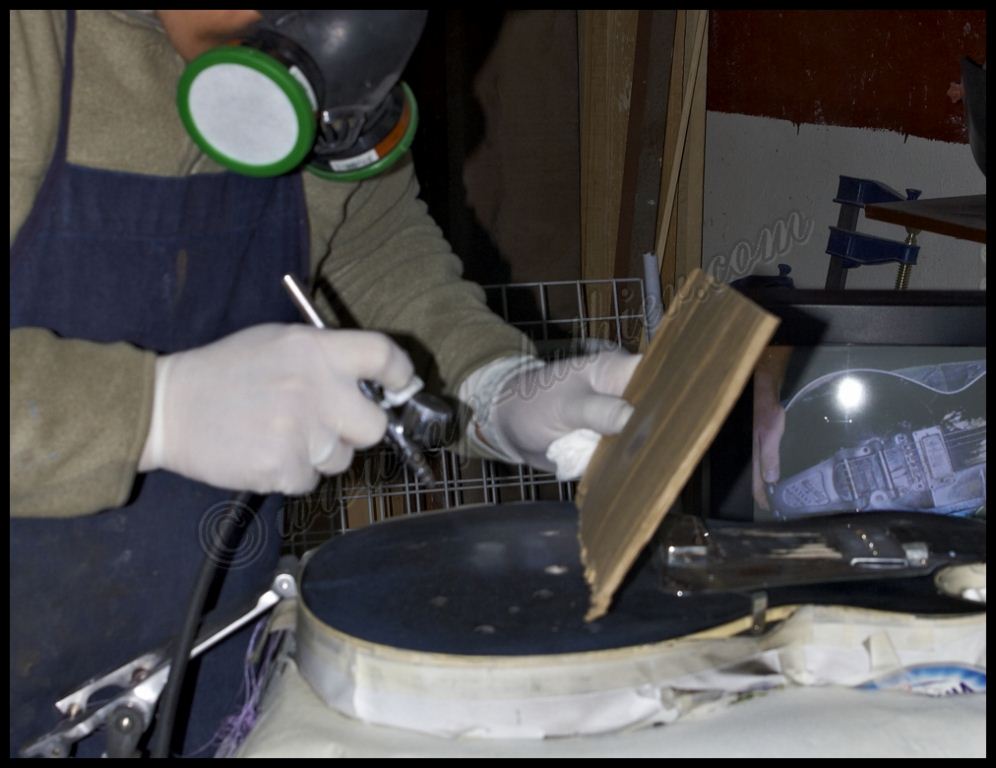
here´s one of the many tools I´ve built to simulate the different scars that leave marks on a guitar, such as belts, rings, blows, etc
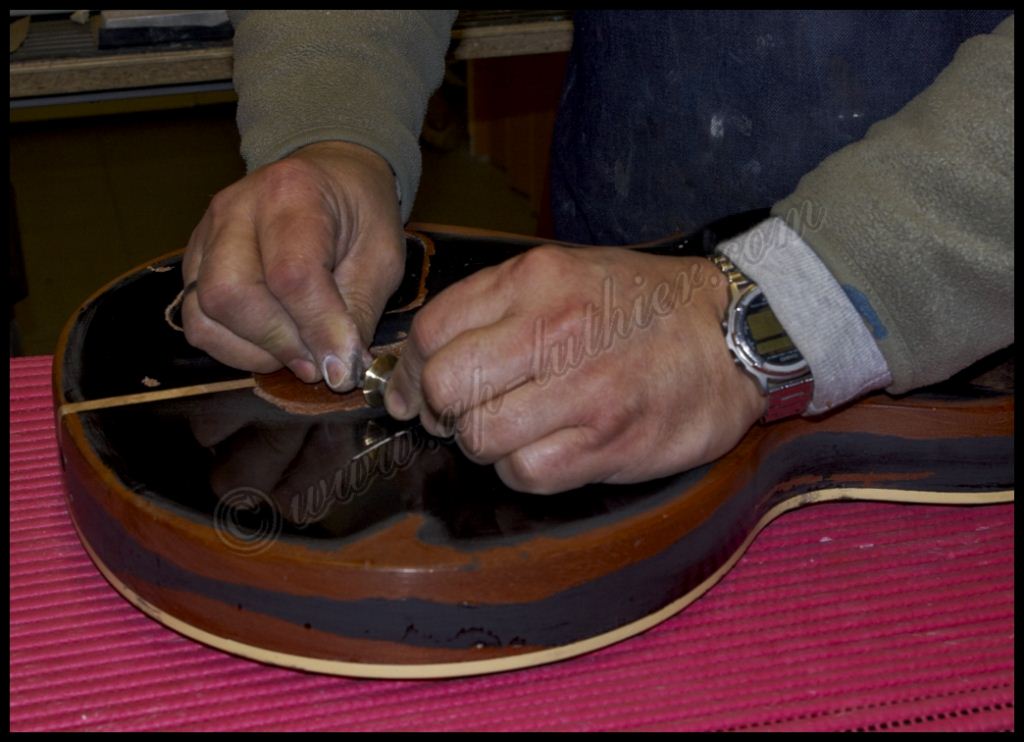
At the beginning I said i was going to cover all the stop bar holes, and indeed i covered them all before applying the finish. The original ´53 model didn´t have this type of bridge. Hence my decision. Nevertheless, when fitting all the hardware pieces, there was something just not right. As the pic I was using to identify all the details on the guitar was of poor quality, i didn´t notice it and I thought of it to be some kind of bump or just wear, but paying close attention I was kind of surprised to find out that it wasn´t that but the stop bar hole.
It seems that before putting the Bigsby on, this guitar had a stop bar as any other Gibson Standard as known these days, which re-inforces my theory that the switch that´s between the knobs was originally located in the area that´s now underneath the Bigsby.
Finally I had to drill the appropriate holes in order to make it look like when it was a Goldtop.
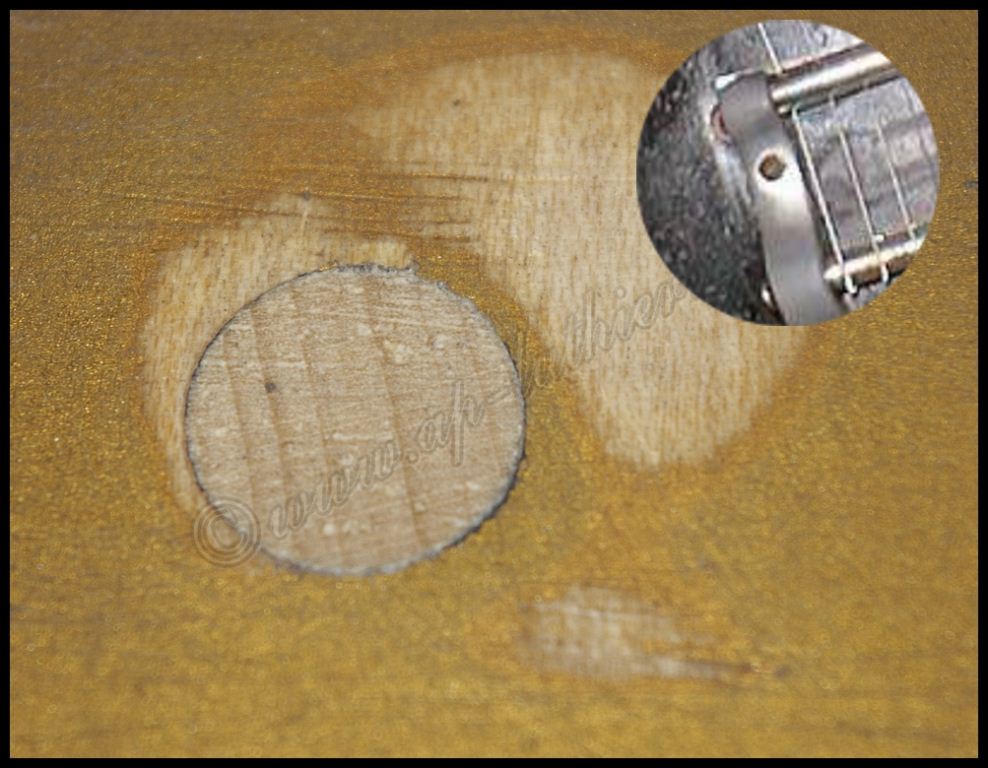
Back to work on the guitar after the previous finishing process, which takes its time because of the waiting periods of the applied producuts. The relic´ing is very noticeable, specially on the binding. Old guitars shows this marks of the time gone past, and where nitro-lacquer changes and wears of on the areas where there´s more contact with hands, belts, clothing, etc.
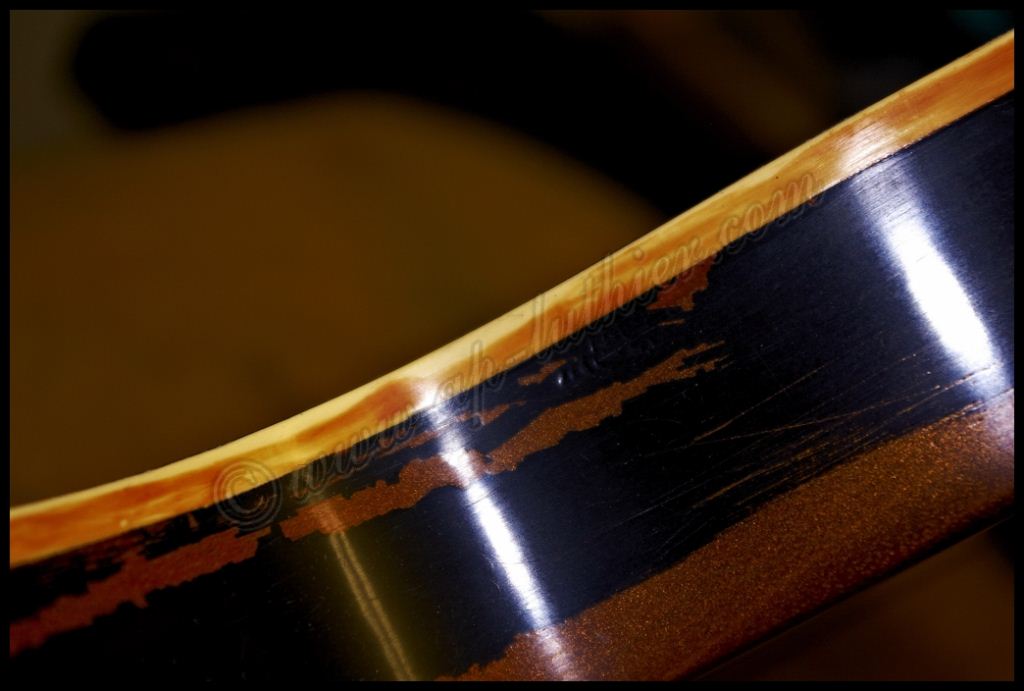
I´ve seen a lot of 50s and 60s guitars, and it´s not so difficult to imitate this process, as they more or less show this wear in specific areas.
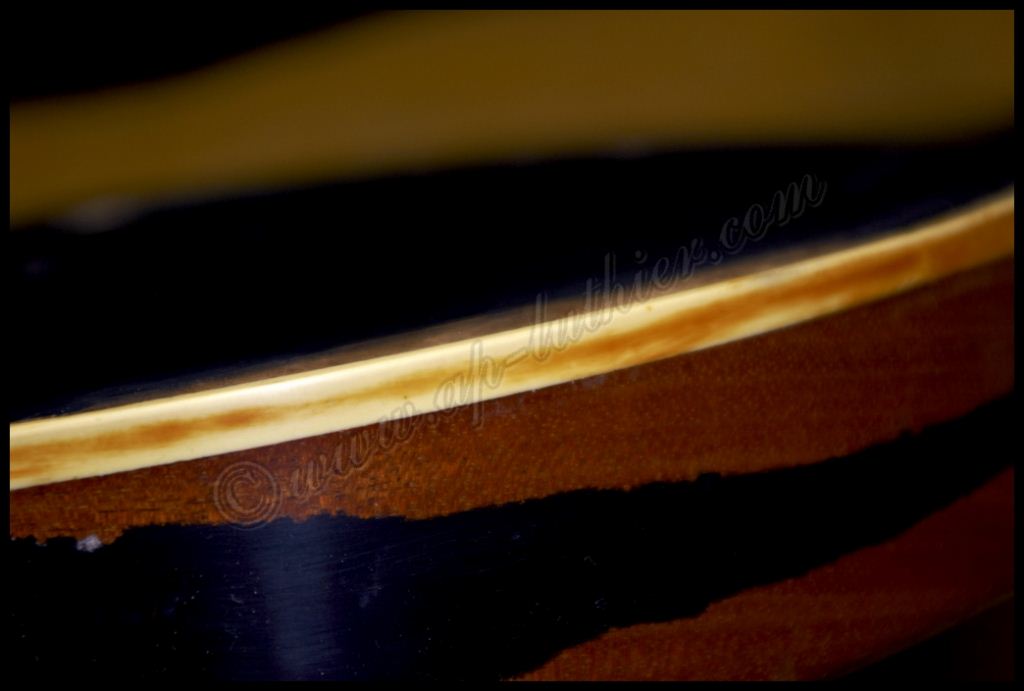
These "darkenings" only appear on nitro-lacquer finished areas, not where there´s no finish.
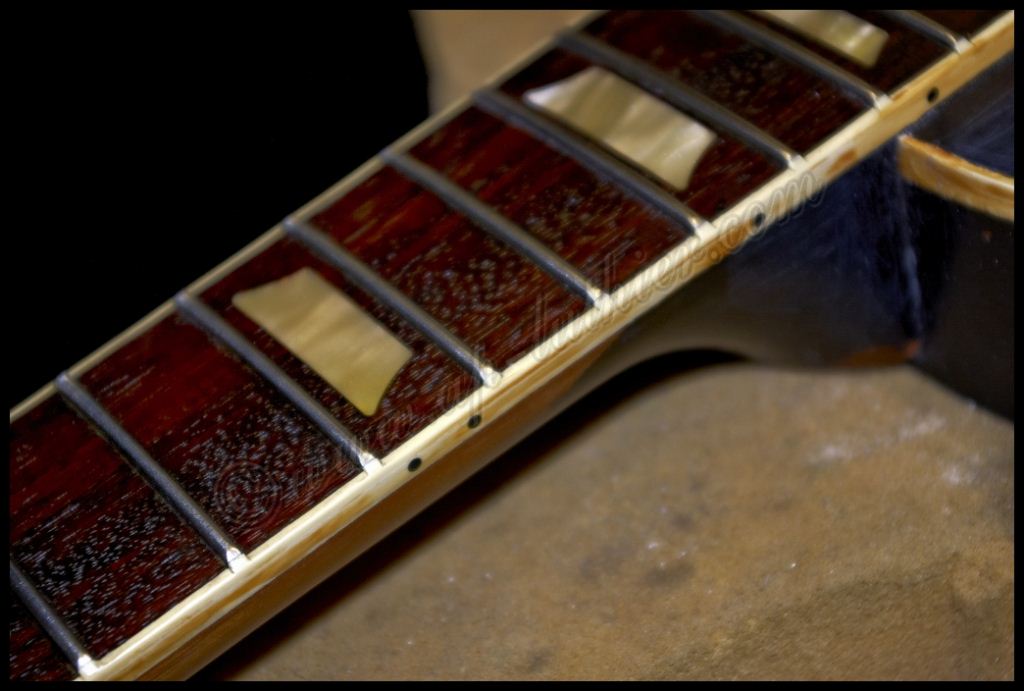
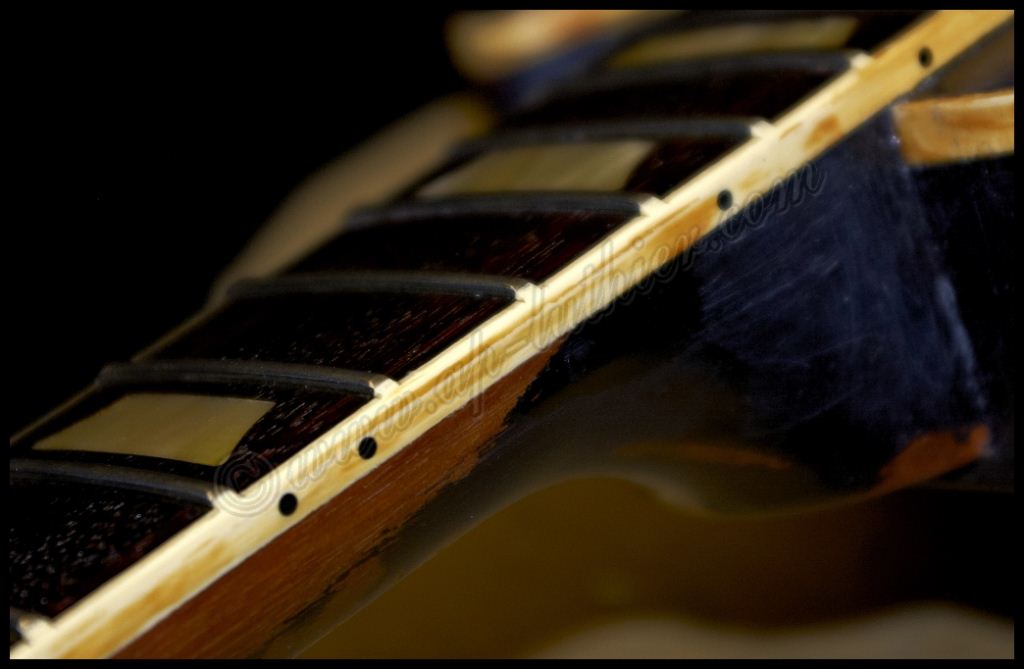
Getting to the last stages of this replica work, I finish off the last detals, and I notice that the pickup switch plate is not made of aluminum, like other parts of the guitar, but a white plastic material apparently. I´ve checked lots of pics to verify this, and in all of them it´s clearly showing that it´s not "metallic" and I´ve come to the conclusion that it´s just a white piece of plastic. I´m not sure whether it´s the original that has been turned around to not show the usual "rhythm-treble" lettering or a different piece. Anyway, I´ve made it white acrylic teflon for maximum hardness and flexibility. The switch tip has been swapped by a vintage one.
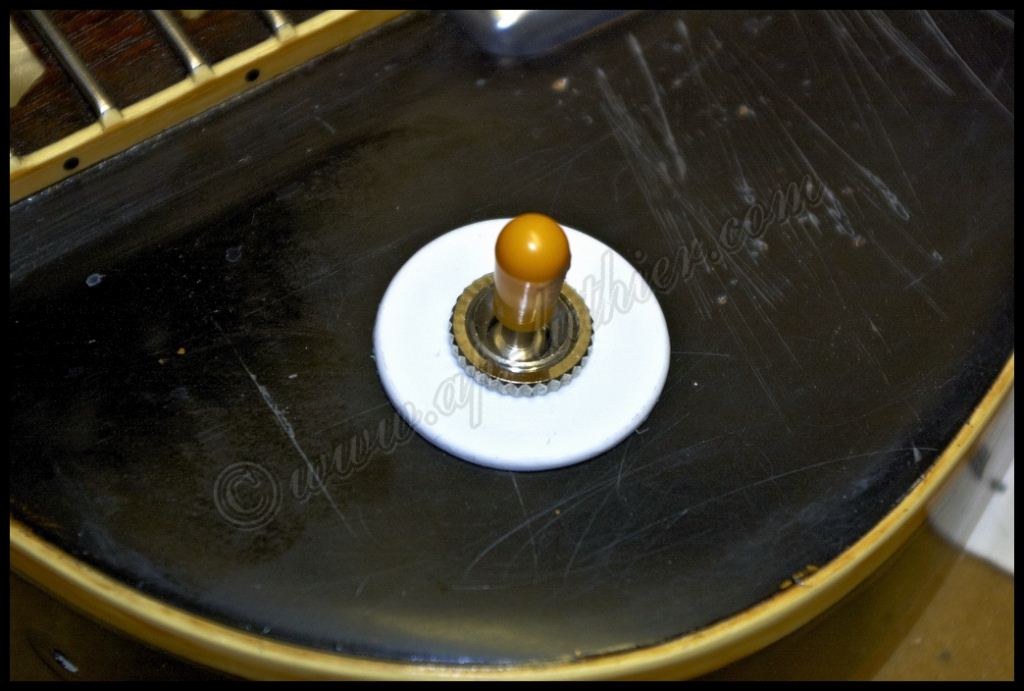
Another part that was still not finished was the aluminum jack plate.
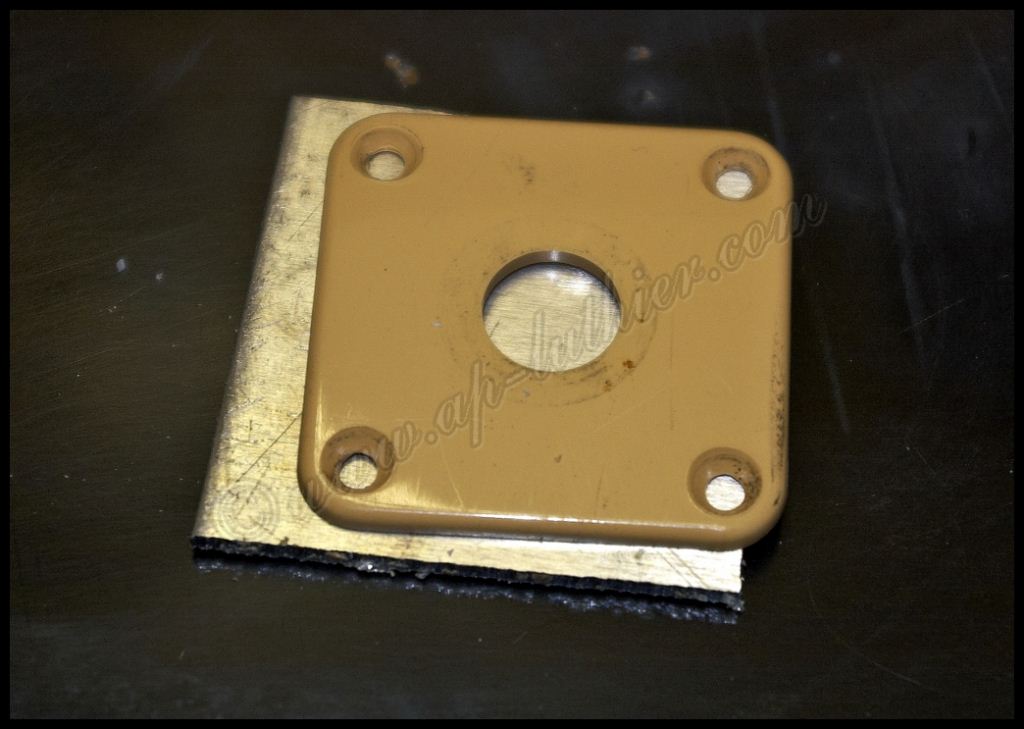
Here you can see it finished, only some relic´ing was still to be done in order to give it its right appearance
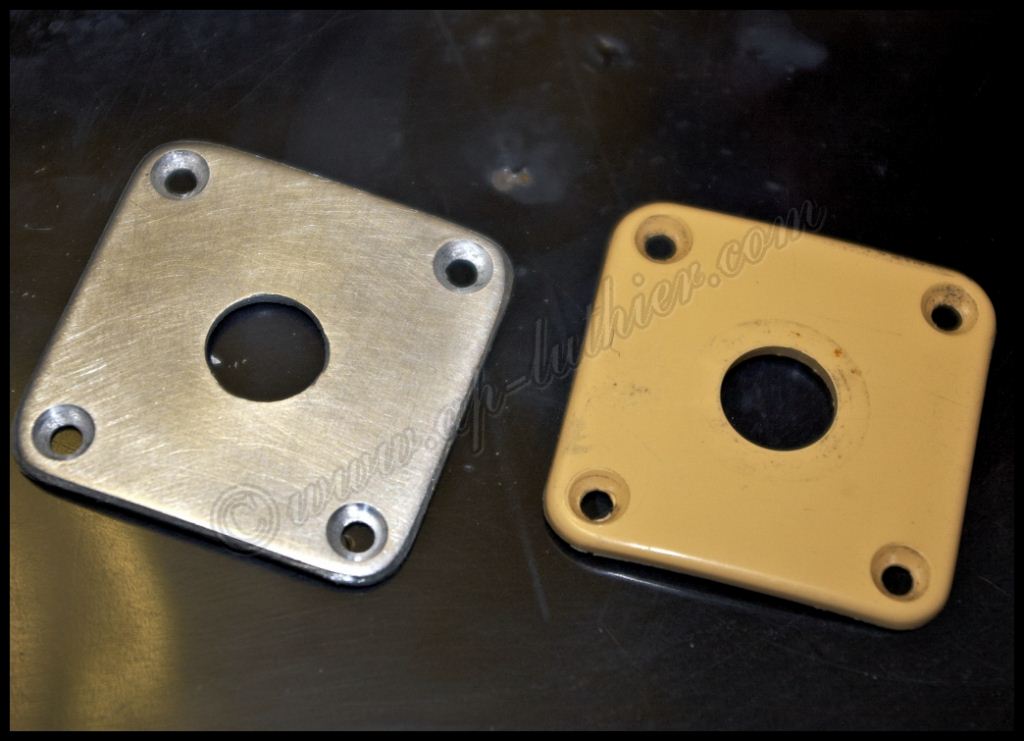
In this guitar, the only detail not exact as in the original is the bridge.
In my opinion, Gibson has designed, in their Nashville bridge, a better one than the original ABR-1.
The ABR-1, the bridge used back in the day by Gibson, was put on Old Black in a later stage instead of its original bridge. The easiest and quickest would´ve been for me to fill in the holes left by the Nashville and replaced it by the ABR-1, but the Nashville is superior than the ABR-1, as well as having all the attributes of its predecessor, it has more mass, the saddles can have more "space" to move with which one can use higher gauge strings. In fact, modern bridges seem to imitate the Nashville more than the ABR-1.
The only exception is the way the bridge is attached to the body. There lies the BIG difference. Its vibration transmission system is not as perfect as the ABR-1, but this has been solved already many years ago with a very simple invention that provides the Nashville to have the same efficiency in this regard as the ABR-1.
My own version of it is the Nash2ABR, here you can check it out:
Nash2ABR
What you will allow me is to explain how this invention was born and the reason why it won´t be used in this replica
When playing a Les Paul or another guitar with a Nashville bridge, it´s easy to feel its ease and comfort of it, the sound, etc, until...One plays the same guitar with an ABR-1 and there´s a noticeable difference favouring the latter. Why?. That´s the question i was making to myself until I had my first Les Paul model in 1970. There was something missing and that increrased the frequencies in one guitar and missing in others.
During the mid-90s, when the Internet was still an infant, and we were in awe of its possibilities, I had the opportunity to download several patents from different guitar manufacturers, who had kindly allowed people to download openly to the public. Regrettably that hard drive (3 gb) where I stored the information, a revolution in technology of the era, died on me, and I lost all of that valuable material, which is very difficult to find on the internet nowadays.
Anyway, on one of those patents, there was an schematic from Mr. Ted McCarty showed his projects for the patent application of the Tune-O-Matic bridge, which originally was used on Gibson Les Paul Customs, to use it on other guitars at the same factory. As you know, the first model was the ABR-1, which would be eventually replaced by the Nashville. There´s another patent application with more detail, as a way of speaking, that shows with thorough detail the intention of getting the screws to touch the wood on the Nashville bridge. Basically, an ABR-1 modified with the newer technology available at the time. I can´t show you this as I lost it and haven´t been able to find it again on the net, and i want to avoid misinterpretations as I don´t have the original patent document.
Miraculously i could find the original patent (not the latter), although it´s not the main one on which I based my own modification, it´s the one in which Ted´s principle ideas hasve been based on:

As you can see, Ted MacCarty already was specifying at the time the relevance of the screw pins to touch the wood.
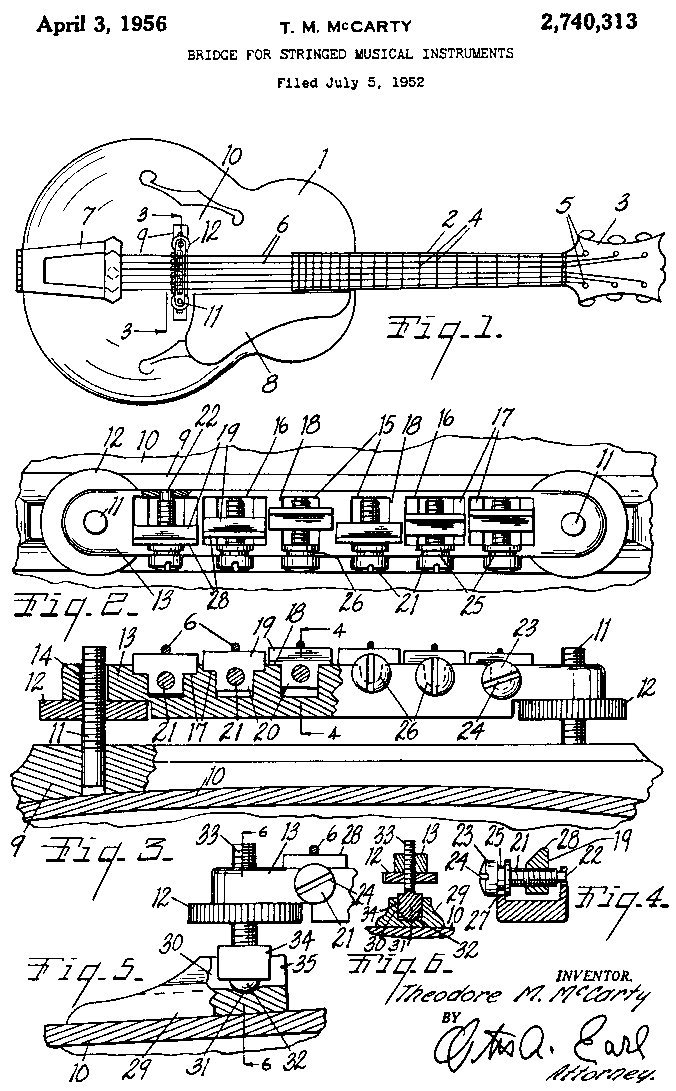
In this detail of the previous pic you can see how he makes emphasis on the contact points 6, 30, 31, 32, 34, 35. This ignited my curiosity back then to investigate about this system and where the key was, as Ted was showing us, it was very important that the axis would made direct contact with the sides as with the bottom.
Indeed, the key was there.
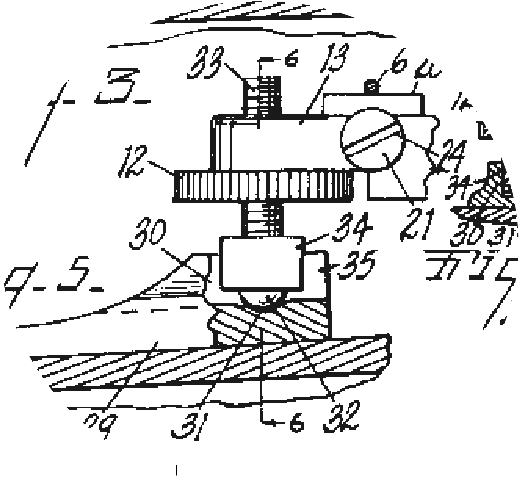
The decision of leaving the Nashville bridge comes directly from the customer who ordered the work on the guitar, as intelligently, like he wants the most faithful replica possible, his priority is also to have a 1st class instrument, which gives its full potential and at the same time works perfectly.
What it´s most noticeable in a Nashville bridge, is the anchors attaching it to the guitar body.
When mounting all the parts on the guitar, and the bridge specifically, and comparing it with a pic of the original Old Black, something was just not right. Hence, I opted to do the following:
I grabbed a piece of ebony, wood largely used by its mechanic and acoustic properties on bridges, of which i have leftovers from fingerboards, and I made a bar piece.
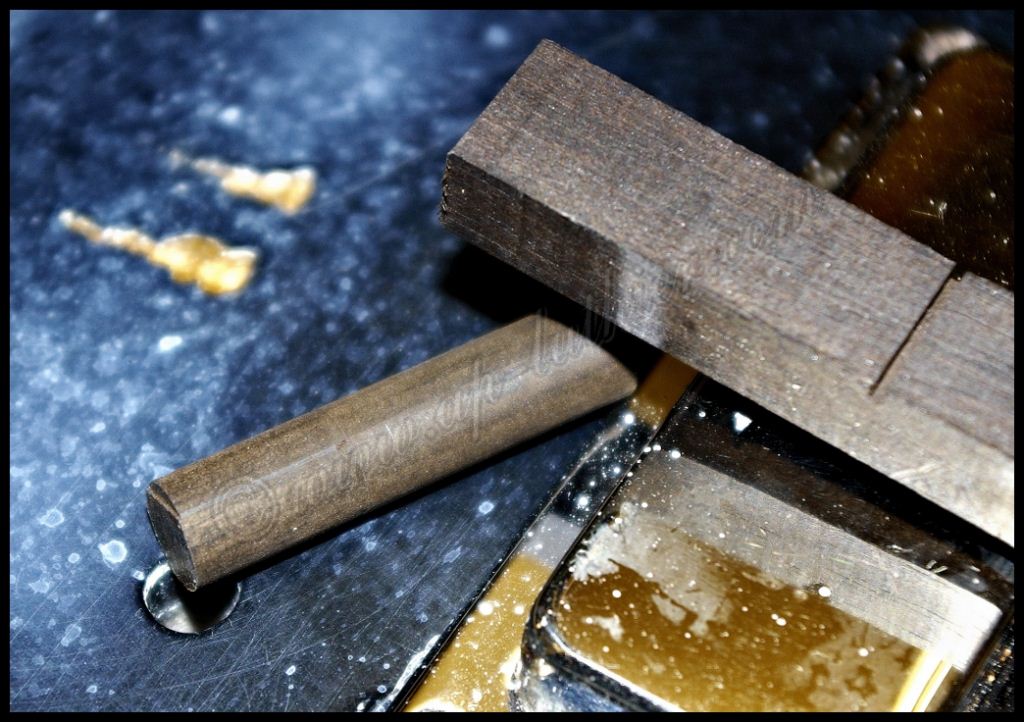
With that ebony bar i made two threaded pieces
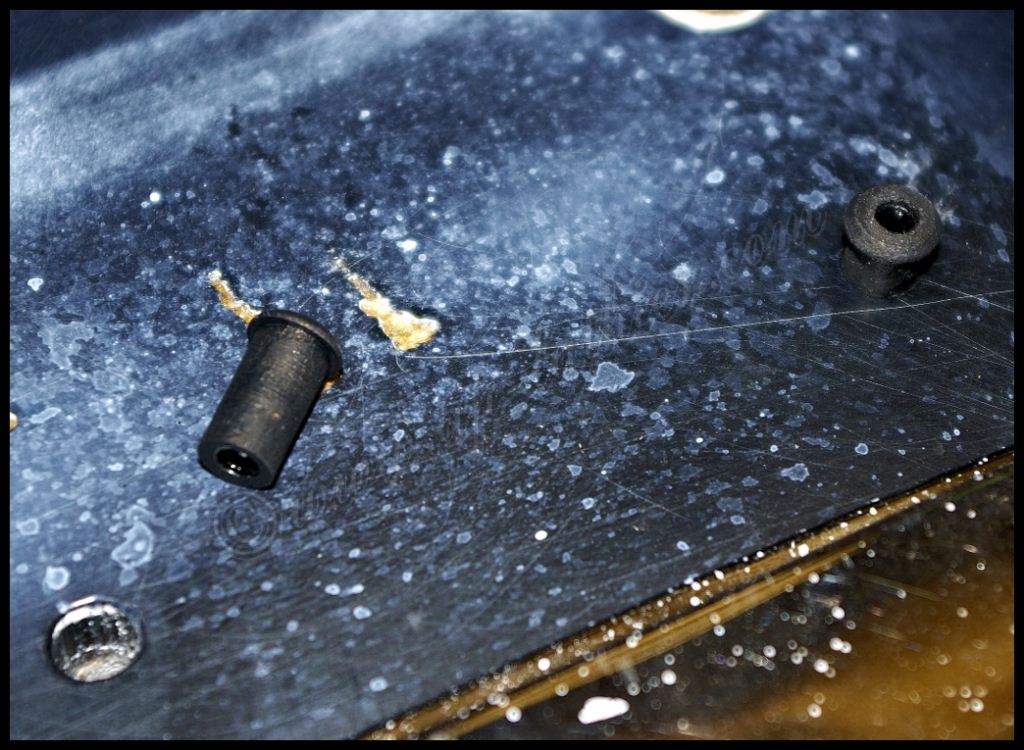
Painted black they are almost unnoticeable at the base of the bridge and perform their function with no issue.
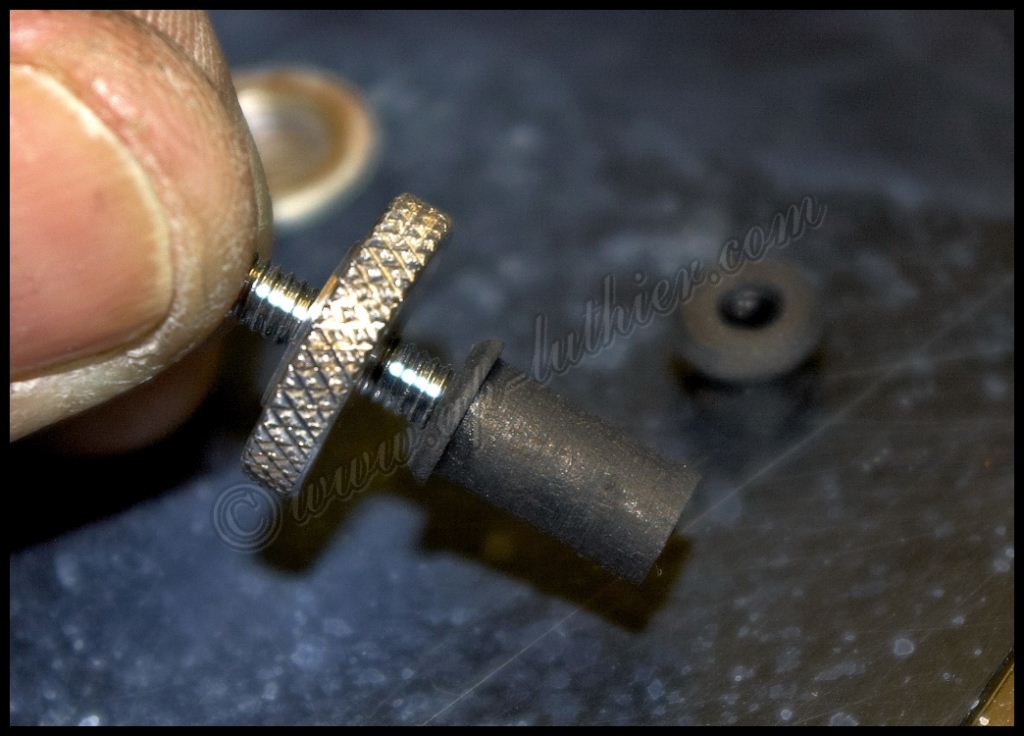
Previous page Next page